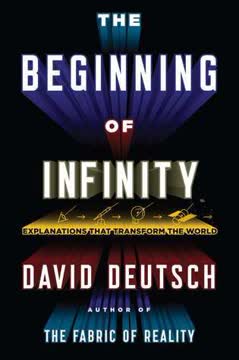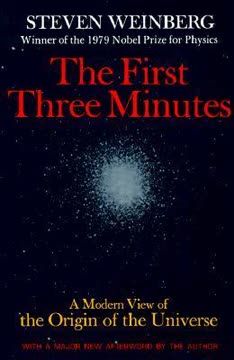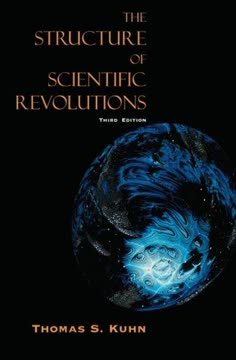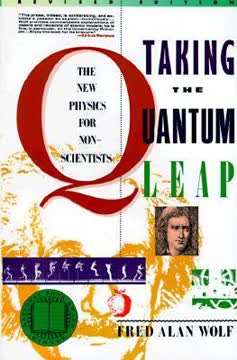Key Takeaways
1. From Passive Observation to Mechanical Certainty: The Classical Worldview
By passively observing, we would learn nature’s secrets. By touching, we would disrupt and learn nothing.
Ancient wisdom. Early human observation was passive, seeking to understand nature without interference. Greek philosophers like Zeno pondered the paradox of motion, questioning how an object could move if it occupied a specific place at every instant, suggesting motion was impossible or discontinuous. Aristotle, however, argued for continuous motion, believing that analysis would disrupt nature's inherent flow.
The Age of Reason. This passive approach shifted dramatically with figures like Galileo and Newton, ushering in the Mechanical Age. Galileo, the first active observer, used experiments to dissect motion, demonstrating concepts like acceleration and challenging Aristotelian views. Newton, building on these "giants," formulated universal laws of motion and gravity, describing a universe as a predictable, continuous clockwork.
Determinism's embrace. This Newtonian framework led to the "nightmare of determinism," where every event, from planetary orbits to human thought, was seen as a predetermined consequence of prior causes. The universe was a machine, its future entirely predictable from its present state, and the observer was assumed to be a neutral, non-interfering entity.
2. The Dawn of Discontinuity: Planck's Quantum Leap
An act of desperation… a theoretical explanation had to be supplied at all cost, whatever the price.
Clouds on the horizon. By the late 19th century, two "dark clouds" obscured the perfect Newtonian landscape: the mystery of light's medium (the "ether" was missing) and the "ultraviolet catastrophe" – the inability to explain why hot objects glowed specific colors rather than emitting all their energy as invisible, high-frequency light. Classical physics predicted an infinite energy output at high frequencies, which was clearly not observed.
Planck's "lucky guess." In 1900, Max Planck, in a desperate attempt to resolve the ultraviolet catastrophe, proposed a radical idea: energy was not continuous but emitted and absorbed in discrete "lumps" or "quanta." His formula, E = hf (energy equals frequency times Planck's constant), explained why higher-frequency light required more energy, thus limiting its emission at lower temperatures. This "chunk" concept was entirely new and lacked a classical mechanical explanation.
Einstein's bold step. Five years later, Albert Einstein took Planck's idea seriously, proposing that light itself consisted of these discrete energy packets, later called photons. This explained the photoelectric effect – how light could knock electrons off metals, with higher frequency (blue) light ejecting electrons with more energy than lower frequency (red) light. This marked the true birth of the quantum age, challenging the continuous wave nature of light.
3. The Atom's Quantum Jumps: Bohr's Revolutionary Model
To make the light, it had to jump. It leaped like a desperate superman from one orbit to another inside the atom.
The atomic puzzle. Early 20th-century models of the atom, like J.J. Thomson's "raisin pudding" or Rutherford's "planetary" model, struggled to explain atomic stability and light emission. Classical physics predicted that orbiting electrons should continuously radiate energy and spiral into the nucleus, causing atoms to collapse. This contradicted observed atomic stability and the discrete "line spectra" of light emitted by gases.
Bohr's audacious postulate. Niels Bohr, building on Planck's constant, proposed that electrons could only exist in specific, "quantized" orbits around the nucleus, each with a whole number of angular momentum units (multiples of Planck's constant, h). Crucially, electrons in these "Bohr orbits" did not radiate energy. This explained atomic stability.
Quantum leaps and light. Light was emitted only when an electron "jumped" discontinuously from a higher energy orbit to a lower one. The energy difference between these orbits, via E=hf, precisely matched the frequency of the observed light. This concept of a "quantum jump" was profoundly non-classical, implying movement without passing through intermediate points, a direct challenge to the notion of continuous motion.
4. The Elusive Nature of Reality: Wave-Particle Duality
Matter, like light, had a dual nature. This was the wave-particle duality.
De Broglie's matter waves. The disturbing idea of quantum jumps led physicists to seek a more continuous explanation. Louis de Broglie, inspired by the wave-particle duality of light, proposed that matter itself, like electrons, also possessed wave-like properties. He theorized that an electron's orbit in an atom could be understood as a "standing wave" pattern, similar to vibrations on a violin string, where only specific wavelengths (and thus energies) could exist.
Experimental confirmation. De Broglie's formula (momentum p = h/wavelength L) predicted that particles with momentum would have an associated wavelength. This "crazy" idea was experimentally confirmed by Clinton Davisson and others, who observed electron beams diffracting and interfering like waves when passed through crystals, producing patterns impossible for classical particles.
Schroedinger's unimaginable waves. Erwin Schroedinger developed a mathematical equation describing these matter waves, hoping to restore continuity. His "wave function" described the electron as a continuous spread, and light emission as a "harmony" of these waves. However, these waves were abstract, existing in multi-dimensional mathematical space, not physical space. Furthermore, a free electron's wave function would spread out rapidly, making it impossible to reconcile with the observed point-like nature of electrons.
5. The Disturbing Observer: Uncertainty and the Creation of Reality
The path comes into existence only when we observe it.
Born's probability interpretation. The spreading Schroedinger wave posed a problem: if an electron was a wave, why did it always appear as a tiny, localized spot when observed? Max Born proposed that the wave function didn't describe the electron itself, but rather the probability of finding the electron at a particular location. This meant nature was fundamentally probabilistic, not deterministic.
Heisenberg's Uncertainty Principle. Werner Heisenberg, influenced by Einstein's operational definitions, argued that concepts only have meaning if they can be measured. He showed that any attempt to precisely measure an electron's position (e.g., with a short-wavelength photon) would inevitably disturb its momentum, and vice versa. This "Uncertainty Principle" meant that position and momentum could not be simultaneously known with absolute precision, fundamentally limiting our knowledge of atomic objects.
Observation creates reality. This principle implied that the act of observation itself was not passive but actively "disturbed" the quantum system, forcing it to "pop" from a state of potential possibilities (the spreading wave) into a single, observed reality. The universe, at its most fundamental level, was not "out there" waiting to be discovered, but was, in a sense, created by our choices of what and how to observe.
6. Complementarity: Embracing Paradox in the Cosmic House
The more we determine or define a system in terms of the one of these complements, the less we know about the other.
Bohr's philosophical stance. Niels Bohr, leading the Copenhagen School, articulated the "Principle of Complementarity." This principle states that certain properties of nature, like wave and particle, are complementary: they are both necessary for a complete description, but cannot be observed simultaneously. Our choice of measurement determines which aspect of reality manifests.
The Paradoxical Cube. This concept is akin to the "paradoxical cube" illusion: you can see it as facing up or facing down, but never both at once. Your act of observation resolves the ambiguity. Similarly, matter can appear as a localized particle or a spread-out wave, depending on the experimental setup. The "whole" reality contains both, but our observation reveals only one "complement" at a time.
Reality as a compromise. Complementarity suggests that reality is not a fixed, objective entity, but a dynamic interplay between the observed system and the observer's choices. Every act of observation is a compromise, revealing one aspect while obscuring its complement. This means that at the quantum level, our minds and thoughts play a crucial role in shaping the reality we experience, challenging the classical subject-object distinction.
7. The Einstein Connection: Non-Locality and the EPR Paradox
The completeness of quantum theory would mean that objects that had previously interacted could still affect each other after they were well separated.
Einstein's challenge. Despite the success of quantum mechanics, Albert Einstein remained deeply uncomfortable with its probabilistic and non-local implications. In 1935, with Boris Podolsky and Nathan Rosen (EPR), he devised a "thought experiment" to argue that quantum mechanics must be incomplete. Their criterion for reality was: if a physical quantity can be predicted with certainty without disturbing the system, then it is real.
The EPR paradox. EPR imagined two particles that had interacted and then separated, potentially by vast distances. Quantum mechanics predicted that by measuring a property (e.g., position) of one particle, the corresponding property (e.g., position) of the other, distant particle could be known with certainty, without disturbing it. The same applied to momentum. This implied that the second particle must have had both a definite position and momentum all along, even though quantum mechanics says you can't know both simultaneously.
Spooky action at a distance. The paradox highlighted quantum mechanics' "non-locality" – a seemingly instantaneous connection between distant, previously interacting particles. If quantum mechanics was complete, then measuring one particle instantly influenced the "reality" of the other, regardless of distance. This "action-at-a-distance" violated Einstein's principle of locality (no influence faster than light), which he famously called "spooky action at a distance."
8. No Hidden Strings: Bell's Theorem and Fundamental Indeterminacy
In other words, there is no hidden message—this is it. We live in a Zen world and, like Pinocchio, there are no strings on us.
The search for hidden variables. The EPR paradox fueled the search for "hidden variables" – underlying, deterministic factors that would complete quantum mechanics and restore a classical, local reality. Physicists like David Bohm proposed such theories, suggesting that quantum weirdness was merely a reflection of our ignorance of these deeper, deterministic elements.
Bell's groundbreaking theorem. In 1964, John S. Bell proved a profound theorem: any "local" hidden variable theory (where influences cannot travel faster than light) would make statistical predictions that differ from those of quantum mechanics. This meant that if quantum mechanics was correct, then reality could not be both local and objective (independent of observation).
Experimental confirmation. Subsequent experiments, notably by John Clauser, confirmed Bell's theorem, showing that the universe indeed behaves according to quantum mechanics' non-local predictions. This implies that if there are hidden variables, they must be "non-local," meaning they can instantly influence distant events. The price of a deterministic universe, if it exists, is a universe where everything is instantaneously connected, bordering on psychic phenomena.
9. Consciousness as the Quantum Pop: Wigner's Friend and the Mind's Role
It is at this point that the consciousness enters the theory unavoidably and unalterably.
The measurement problem. Quantum mechanics describes systems as superpositions of possibilities (qwiffs) until an observation "pops" them into a single reality. But what constitutes an "observation"? Does a machine count? A mouse? Eugene Wigner, a Nobel laureate, argued that it is consciousness that causes the quantum wave function to collapse, making a potential reality actual.
Wigner's Friend paradox. Wigner proposed a thought experiment: a friend observes a quantum system (like Schrödinger's cat in a box). According to quantum mechanics, the friend and the cat are now in a superposition of states (e.g., friend sees live cat/cat is alive, AND friend sees dead cat/cat is dead). When Wigner then observes his friend, he collapses this larger superposition. Wigner argued that the buck stops with the friend's consciousness; the friend's mind, not Wigner's, collapses the initial cat superposition.
Consciousness as choice. Wigner's view suggests that our consciousness actively shapes reality by making unpredictable "choices" that collapse qwiffs. This implies a profound role for the mind in the physical world, where "knowing" (epistemology) and "being" (ontology) are inextricably linked. This perspective challenges the traditional separation of mind and matter, suggesting that our awareness is not merely a passive recipient of reality but an active participant in its creation.
10. Parallel Universes: All Realities Unfold Simultaneously
This web of time—the strands of which approach one another, bifurcate, intersect or ignore each other through the centuries—embrace every possibility.
Everett's radical solution. Hugh Everett III proposed the Many-Worlds Interpretation (MWI) to resolve the measurement problem without invoking consciousness or wave function collapse. Instead of the qwiff "popping" into one reality, MWI posits that all possible outcomes of a quantum measurement actually occur, each in its own separate, parallel universe.
No collapse, just branching. When a quantum system interacts with an observer (or any other system), the entire universe "splits" or "branches" into multiple, non-overlapping parallel universes. In each branch, one of the possible outcomes is realized. For example, in the Schrödinger's cat paradox, one universe contains a live cat, and another contains a dead cat, with the observer existing in both.
Implications for consciousness. In MWI, consciousness is not a special "popper" of qwiffs. Instead, observers are simply part of the quantum system, and they too split into multiple copies, each experiencing one of the branched realities. This means we are constantly branching into countless parallel selves, each living out a different possible future, though we are only aware of the single branch we inhabit.
11. The Future's Echo: How Tomorrow Shapes Today
The future actually communicates with the present in the human nervous system.
Transactional interpretation. Physicist John G. Cramer proposed the transactional interpretation, which offers a unique perspective on quantum interactions. It suggests that a quantum "transaction" involves two waves: an "offer wave" propagating forward in time from the emitter, and an "echo wave" propagating backward in time from the absorber. A real event (a "pop") occurs only when these two waves meet and reinforce each other.
Wheeler's delayed choice. This interpretation can explain paradoxes like Wheeler's Delayed-Choice experiment, where an experimenter's choice after a photon has passed through a double slit determines whether the photon behaved as a wave (passing through both slits) or a particle (passing through one). Cramer's model explains this by the echo wave from the future influencing the photon's past behavior.
Awareness before awareness. Intriguingly, this concept finds a potential parallel in neurophysiology. Experiments by Benjamin Libet showed that subjects reported conscious awareness of a sensation before their brains registered the necessary neural activity. This "delay-and-antedating" paradox suggests that our subjective experience might involve a backward-in-time "echo" from a future brain state, hinting at a transactional process within human consciousness itself.
Last updated:
Review Summary
Taking the Quantum Leap receives mixed reviews. Many praise Wolf's accessible explanations of complex quantum physics concepts for non-scientists, appreciating the historical approach and mind-bending ideas about consciousness. Some find the book enlightening and thought-provoking, while others criticize it for veering into mystical territory, especially in later chapters. Readers with varying levels of scientific background engage differently with the material. The book is noted for its clear language, though some struggle with the more abstract concepts. Overall, it's seen as a valuable introduction to quantum mechanics for lay readers.
Similar Books










Download PDF
Download EPUB
.epub digital book format is ideal for reading ebooks on phones, tablets, and e-readers.






